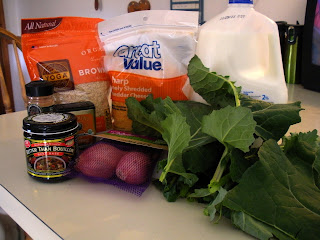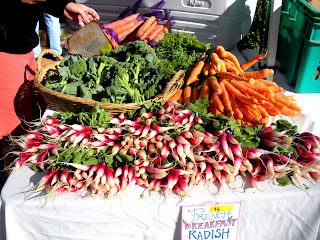This week I came across another recipe for a vegetable gratin and decided to give it a try. While the last gratin recipe I tried involved kale and cheddar cheese, this recipe included artichokes, peas, and Parmesan cheese. In general, I love anything with cheese, so I was excited to try this dish.
The goal of my cooking adventures was to try to find fresh, in-season vegetables and use them to create new and delicious dishes. However, with winter upon us, it is getting trickier and trickier to find fresh, in-season produce. Instead of using fresh artichokes and peas for this recipe, I used frozen. It would be interesting to try this dish again when fresh forms of the vegetables are available, but for now the frozen will have to do.
The good thing about frozen vegetables is that although some of the taste may be sacrificed, the nutritional value is generally conserved. Artichokes are a food popular in Mediterranean dishes, and the top countries for producing artichokes worldwide are still France, Italy and Spain. Interestingly, I read that 100% of the artichokes produced in the United States come from California.
Artichokes have several nutritional benefits. Primarily, artichokes are full of antioxidants. A chemical compound found in artichokes, Cynara, causes in increase in bile flow, which aids in digestion, strengthens the liver and gall bladder function, and raises the HDL/LDL cholesterol ratio. Artichoke leaf extracts have also been used to treat people with upset stomachs and irritable bowel syndrome.
There has been some debate over what type of food an artichoke is: fruit, vegetable, or flower? After some research I came to the conclusion that the part of an artichoke that we eat is a vegetable. The artichoke plant is a member of the thistle family, meaning that it is a flowering plant with prickly leaves. When mature, the artichoke has a bright purple flower. However, the artichoke that we eat is harvested before the flower has a chance to bloom. It is harvested while still in the bud stage. Still, we can’t say that the artichokes we eat are flower buds. Rather, what we eat are the leaves that are surrounding the flower bud. Who knew artichokes were so complex?
I did some research on the other main ingredient in this dish, peas, too. They were kind of boring in comparison. The most interesting thing about peas is that they were used the research by Gregor Mendel and their genetic information formed the basis of Mendelian genetics.
To start this recipe, whisk 1 tablespoon butter and 1 tablespoon flour in an ovenproof skillet over medium-high heat for about a minute.
Next add 1 ¼ cups fat-free milk and whisk until boiling. Since milk has a tendency to boil over in a matter of seconds, I removed the skillet from the heat at this point to add the next ingredients.
Stir in 12 ounces of thawed frozen artichoke heart and 1 cup thawed frozen peas. Add ½ teaspoon each of salt and lemon zest. Bring mixture to a simmer.
Add about 2 ounces fresh grated Parmesan cheese and stir until melted.
At this point it seemed a little soupy to me, so I decided to place it in a 350 degree oven for about 15 minutes, until the mixture is bubbly and slightly thickened. Unfortunately, it didn’t really thicken. I removed it from the oven and just decided to let it sit for a few minutes to see if it would thicken as I stirred it. It kind of did.
Top with an addition 2 to 3 ounces fresh grated Parmesan cheese. Broil until golden.
After taking it out from under the broiler I found that it had thickened nicely. This dish was very flavorful, with the dominant flavors being the artichokes and lemon. The pronounced flavor of the lemon was a bit surprising to me since there was only ½ teaspoon lemon zest. Since I think the artichoke and lemon flavor go together very well I really liked the flavor, but if you don’t like lemon as much, you might want to decrease the zest.
As for the peas, well, like my research earlier, their flavor was more boring than the artichoke’s. I really didn’t taste them at all. They added to the texture of the dish though and gave it a nice little crunch.

















































